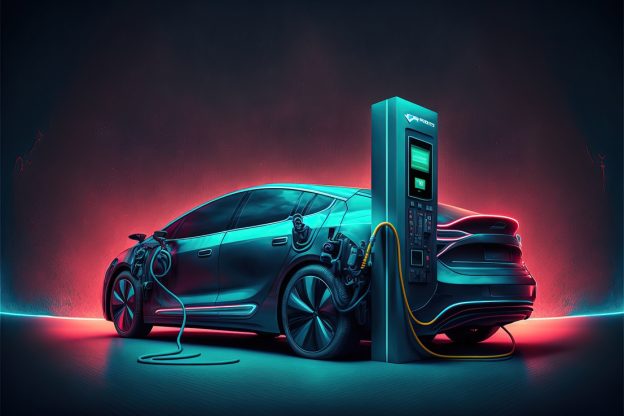
As we approach April 2025, significant changes to the UK’s car tax system are on the horizon.
The 2025/2026 tax year will impact car owners across the board, from electric vehicles, diesel drivers or somewhere in between.
Effecting both domestic and company car drivers the car tax changes 2025 represent a significant shift in UK vehicle taxation policy so staying informed and planning ahead can help you minimise the financial impact on your motoring life.
Although the rates of car tax are adjusting the way you tax your vehicle or claim a car tax refund from the DVLA isn’t being changed.
In our short guide, we’ll break down the VED car tax changes 2025, helping you understand what to expect and how to prepare.
How Much is Road Tax Changing in 2025?
The upcoming changes to road tax in 2025 are substantial and varied, affecting different vehicle types in unique ways. Here’s a breakdown of the key changes:
Electric Vehicles (EVs)
For the first time, electric vehicles will be subject to VED. New EVs registered from April 1, 2025, will face a £10 first-year rate.
EVs registered between 2017 and 2025 will see a standard annual rate of £195, while those registered before 2017 will pay £20 annually.
Conventional Vehicles
Petrol and diesel vehicles will see significant increases:
- First-year tax rates will double for vehicles emitting over 76g/km CO2.
- The £10 annual discount for hybrid vehicles will be removed.
- The standard rate for hybrid vehicles will increase to £195.
Luxury Vehicles
The expensive car supplement, which applies to vehicles over £40,000, will now include electric vehicles. This means an additional £425 annual charge for five years from the second year of registration.
Starting from 1 April 2025, the luxury car surcharge will increase to £425 annually as all vehicle excise duty fees escalate annually following the retail price index (RPI).
Unfortunately for luxury car drivers from years two to six the expensive car supplement is in addition to the standard VED rate, which is climbing to £195 from April 2025.
Do Electric Cars Pay Road Tax Under the New 2025 Rules?
Yes, in a significant shift from current EV car tax policy, electric cars will pay road tax under the new 2025 rules.
This change marks the end of the tax-free era for EVs, reflecting the government’s need to balance revenue generation across all vehicle types as the UK moves towards a zero-emission future.
Here’s what EV owners need to know:
- New EVs registered from April 1, 2025, will pay a £10 first-year rate.
- EVs registered between 2017 and 2025 will pay a standard annual rate of £195.
- EVs registered before 2017 will pay a lower annual rate of £20.
This new taxation structure aims to ensure that as more drivers switch to electric vehicles, they contribute to road maintenance and infrastructure costs.
On a positive note for electric car owners it’s worth noting that even with these new charges, EVs will still generally incur lower tax rates compared to their petrol or diesel counterparts.
Electric vans with zero emissions will move to the same rate as petrol and diesel light goods vehicles, which for the majority of electric vans is currently set at £335 per year.
Low Road Tax Cars: Which Vehicles Will Be Most Affordable in 2025?
With the new tax structure, the landscape for low road tax cars is changing. Here are some categories to consider:
- Pre-2017 Electric Vehicles: These will remain the most affordable with an annual tax of just £20.
- Low Emission Petrol and Hybrid Vehicles: Cars emitting 1-50g/km CO2 will see a first-year rate of £10, rising to £110 in 2025.
- Small, Efficient Petrol Cars: Vehicles with emissions between 51-75g/km will face a £130 first-year rate in 2025, still relatively low compared to higher emission vehicles.
- Older, Low Emission Vehicles: Cars registered before April 2017 with emissions up to 100g/km will continue to pay £20 annually.
Car Tax Changes 2025 for Diesel Vehicles: What to Expect
Diesel vehicle owners will see some of the most significant changes:
- First-year rates for diesel cars not meeting the RDE2 emissions standard will continue to be higher than their petrol counterparts.
- The removal of the £10 hybrid discount will affect diesel-hybrid vehicles.
Higher emission diesel vehicles could see their first-year tax rates double, potentially adding thousands to the cost of a new car.
How the 2025 Car Tax Changes Affect Older Vehicles
Owners of older vehicles should also be aware of the changes:
Cars registered before April 2017 will continue to be taxed based on the old system, which could be beneficial for some low emission vehicles.
Moving forward older high-emission vehicles may become increasingly expensive to run as the government pushes for cleaner transportation.
Classic cars (over 40 years old) will remain exempt from VED.
Preparing for the 2025 Car Tax Changes
As we approach 2025, here are some steps you can take to prepare:
- Reassess Your Vehicle Choice: If you’re planning to buy a new car or deciding on a new company car, consider how the 2025 tax changes might affect your long-term costs.
- Budget Accordingly: If you own a vehicle that will see increased taxes, start budgeting for these additional costs now.
- Stay Informed: Keep an eye on official government announcements for any updates or changes to the proposed tax structure. While these changes are set to come into effect in April 2025, it’s always possible that further adjustments could be made by the government.
To determine how much your car road tax will be under the new system, consider factors like CO2 emissions and purchase price.
You can use the governments free car tax rates checker online here https://www.gov.uk/check-tax-rates-new-unregistered-cars.
You can find out more about car tax by using the Driver and Vehicle Licensing Agency (DVLA) website https://www.gov.uk/government/organisations/driver-and-vehicle-licensing-agency.
Tax Changes 2025: The Broader Impact on Vehicle Owners
The car tax VED changes 2025 will see a restructuring of tax bands and the introduction of charges for previously exempt vehicles. This broader impact extends beyond just the amount paid:
- Purchasing Decisions: The new tax structure may influence car buying choices, potentially steering more people towards lower emission vehicles.
- Used Car Market: There might be increased interest in pre-2017 low emission vehicles due to their lower tax rates.
- Fleet Management: Businesses will need to reassess their vehicle fleets, potentially accelerating the shift towards electric and low emission vehicles.
- Environmental Impact: By increasing taxes on higher emission vehicles, the government aims to further incentivise the adoption of cleaner technologies.
What about Pay Per Mile Road Tax?
A pay per mile road tax scheme is being considered by the government which could replace the current car tax (VED) at some point in the future.
The potential change to how road tax is charged has sparked numerous questions among drivers about how such a system would work and what it might cost them.
The idea of implementing a pay-per-mile road tax in the UK suggests replacing the existing fixed yearly vehicle excise duty system with a pay per mile model that calculates car tax based on the distance travelled by drivers on public roads.
Early estimates suggest various pricing structures. The Tony Blair Institute proposes a rate of 1p per mile for cars and vans, with 2.5p to 4p for lorries. Alternatively, some experts project charges up to 15p per mile.
For the average UK motorist covering 7,000 miles annually, this could translate to costs between £70 and £1,050 per year. Additionally, the system might incorporate variable rates based on:
- Vehicle type and emissions
- Time of day
- Location of travel
- Traffic density
Presently, the government has not officially announced specific implementation plans. The system would likely be introduced gradually, primarily starting with a pilot programme in select regions before nationwide adoption.
The Campaign for Better Transport suggests a fee of approximately 2p per kilometre, specifically designed to address the projected £35 billion tax revenue gap from increasing electric vehicle adoption.
The system could essentially merge various charges, including vehicle excise duty, fuel duty, toll road fees, and congestion charges into a single payment.







